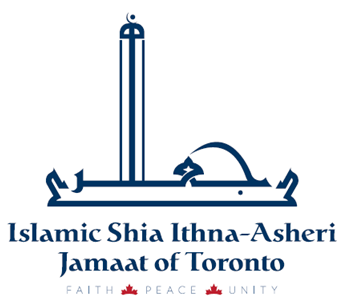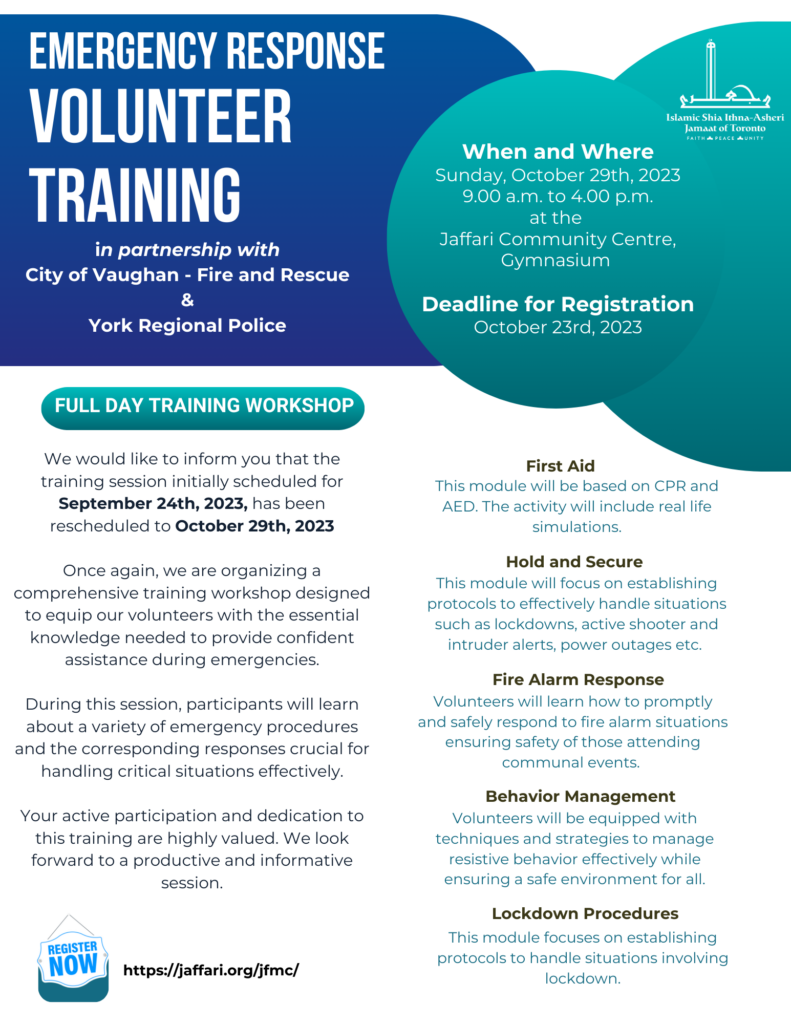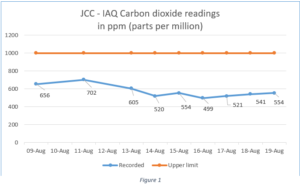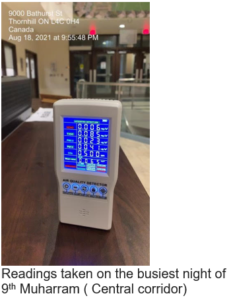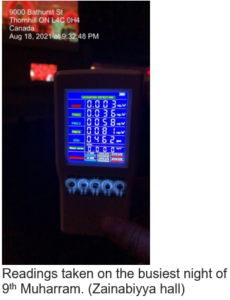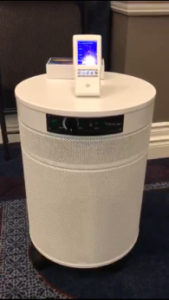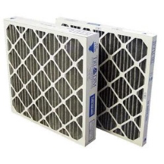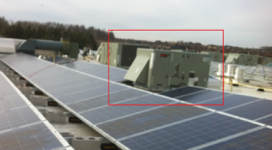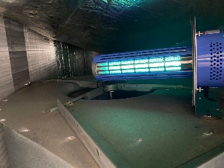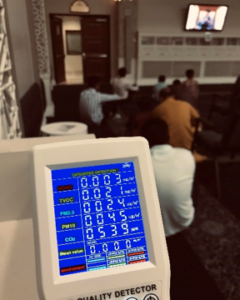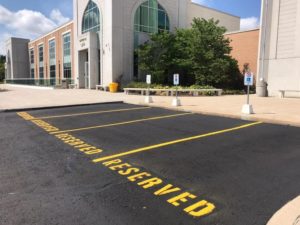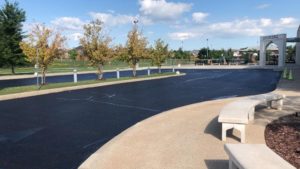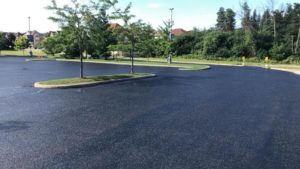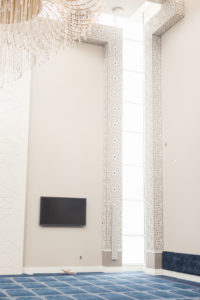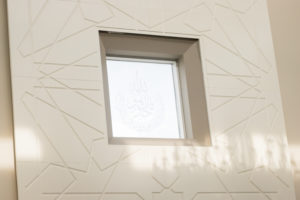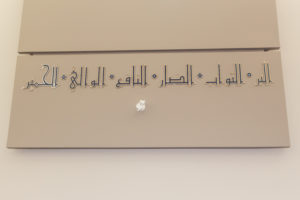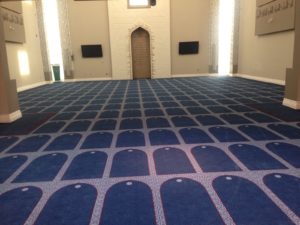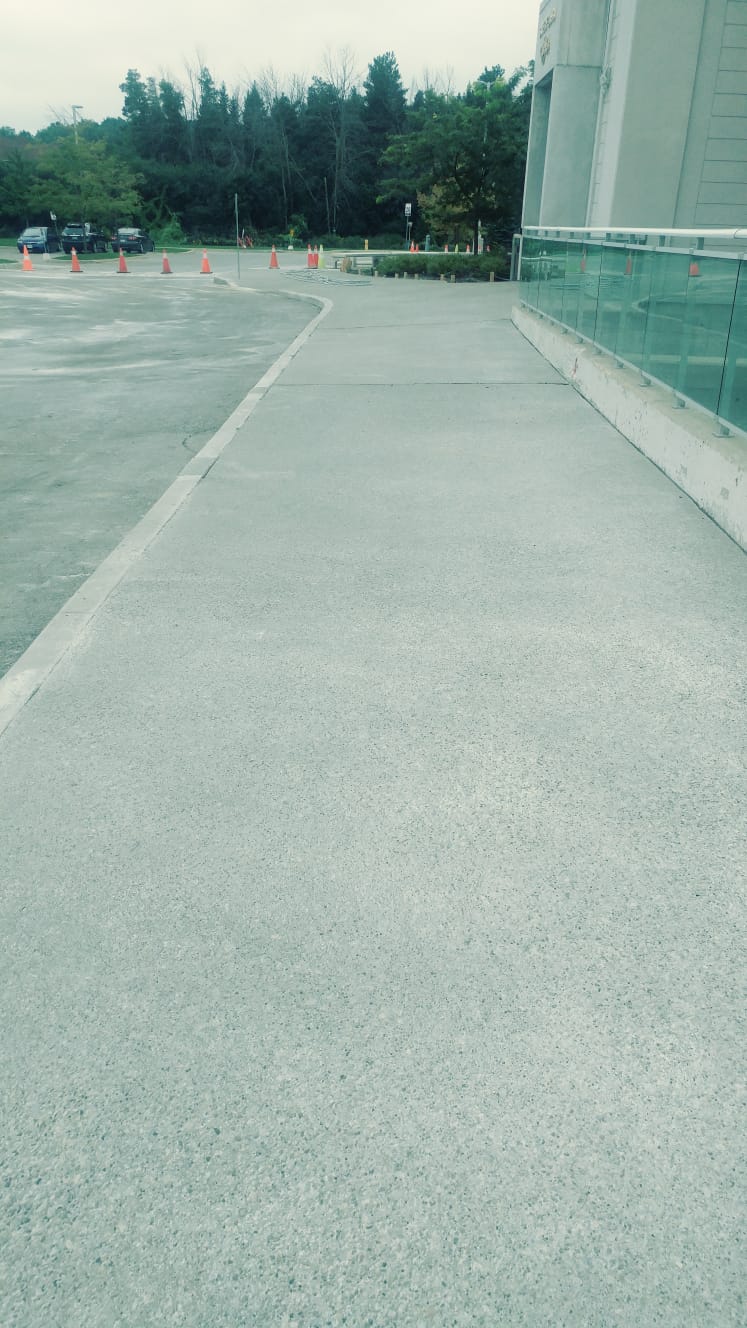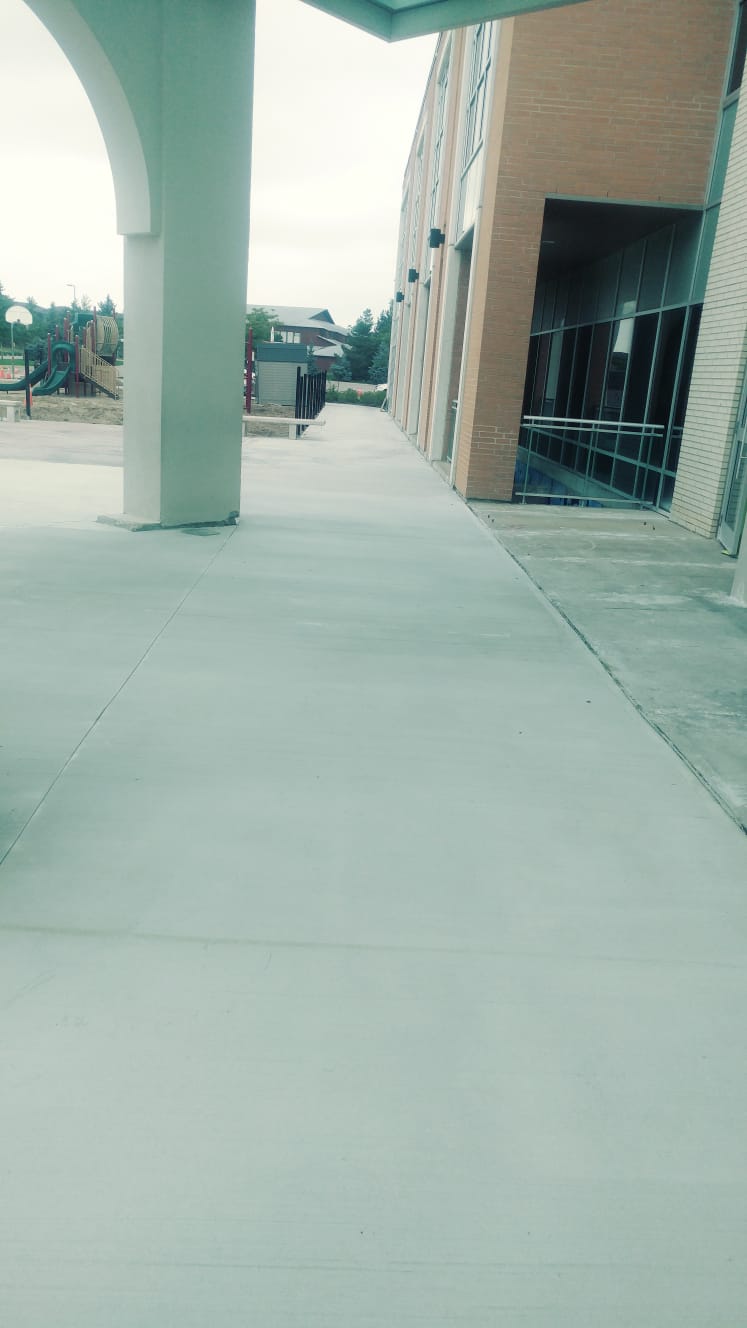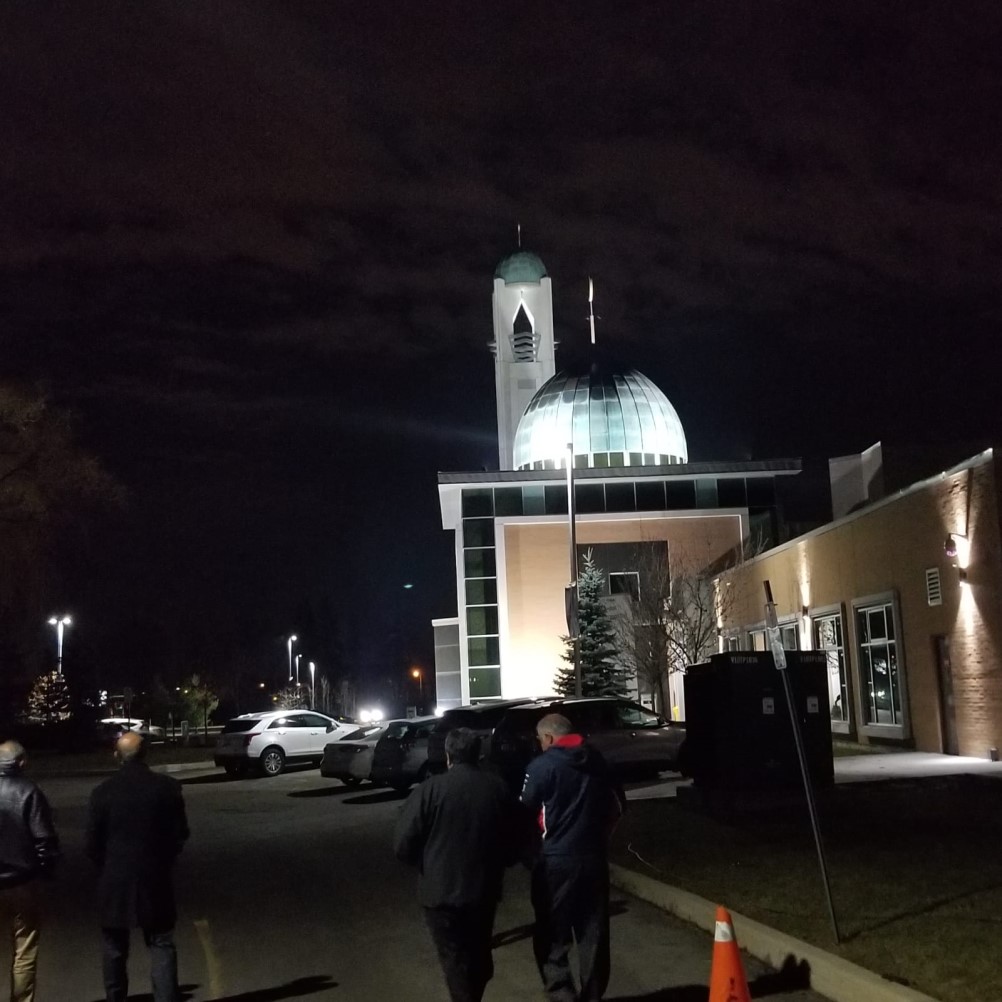2021 Update - Indoor Air Quality update to ISIJ Centres
As a part of our ongoing effort to maintain safe indoor air quality for all ISIJ centers, JFMC is pleased to provide this IAQ update.
To prepare for reopening of our centers and for readiness for Muharram and regular programs, JFMC implemented multiple HVAC upgrades for maintaining safe IAQ at JCC, MIC and RIC. These upgrades included installations of HEPA filtered UV air purifiers, duct mounted UV lights at JCC and air quality monitors to ensure healthy ventilation is maintained during the Muharram programs.
These proactive upgrades combined with enhanced ventilation by energy recovery ventilation (ERV) at JCC meet not only meet but exceed industry guidelines for IAQ safety for religious and public places.
To evaluate the effectiveness of these proactive measures, the IAQ team regularly monitored the indoor air quality daily during the Muharram programs and is pleased to report that throughout the 10 day and subsequent Muharram programs, all parameters for indoor air quality were observed to be in optimum and excellent range. A trend of the measurements taken during the program is shown the in graph below.
IAQ was measured before and during the events to validate effectiveness of the measures taken and to reassure safe IAQ environment.
Understanding the IAQ Parameters:
- CO2 Levels: Measured in ppm (particles per million), Carbon di-oxide levels indicate effectiveness of fresh air ventilation in any indoor environment. ASHRAE guidelines recommended CO2 levels to be maintained within 700ppm of outside air with 1000-1200ppm as an optimum range.
Higher CO2 levels can cause headaches and are indication to increase fresh air intake to keep up with the occupant capacity. Throughout the 10 days and also on the on the busiest days of the program at JCC, multiple readings confirmed CO2 levels well within excellent range.
- TVOC: Total volatile organic compounds, measured in mg/m3 Is a measure of volatile organic compounds in air, generated typically from indoor air pollutants can have adverse health impact due to long term exposure in higher levels. All readings taken during the 10 days were well below the recommended level of 0.5mg/m3 with average at 0.22 mg/m3.
- HCHO : Levels of formaldehyde measured on mg/m3. Typically released in air due to off gassing from new furniture, carpets and other pollutants. Average reading of HCHO during the 10 days was and never found to be above the recommended level of 0.5mg/m3 with average recording at 0.03 mg/m3.
- PM 2.5: Measures fine particulate air pollution for particles below 2.5 microns µg/m3, these particles remain suspended in air and extended exposure at higher than recommended limits can become health risk. Average measurement was for PM2.5 was in excellent range
- PM 10: Measures particles below 10 microns and 2.5 microns measured in µg/m3. These are duct particles from varied sources and can cause irritation in higher limits. Average measurement was for PM10 was in excellent range at 48 µg/m3, with a 150 µg/m3 recommended limit.
Safety protocols :
Despite all the proactive measures put in place for keeping the indoor environment safe , following PPE and social distancing protocols remains the most formidable and first in line defense against spread of infections. No amount of IAQ and HVAC measures can protect against exposure due to non-adherence to safety protocols and public health guidelines.
We are confident that with procedural adherence and the system upgrades put in place, all ISIJ centers will be able to safely conduct regular programs as planned for community members.
Indoor Air Quality enhancements to ISIJ Centres
Salaam Alaikum,
As our centers resume operations following provincial guidelines for reopening of religious facilities, ISIJ under the guidance of BoD has been pro-active in taking measures to mitigate COVID-19 virus transmission and has taken steps for HVAC upgrades conducted by JFMC & DOF (Director of Facilities Office), to maintain safe indoor air quality (IAQ) at all three ISIJ centers at JCC, MIC and RIC.
During the lockdown, JFMC/DOF closely followed emerging industry updates and guidelines on best practices for keeping the HVAC system and IAQ safe for preventing the spread of air-borne pathogens through the HVAC system.
The following measures were undertaken:
- Portable Air Purification units with HEPA filters and UV germicidal lamps:
Masjid and main halls of all three centers are now equipped with multiple medical grade portable air purification units which provide air purification and additional air exchange during gatherings.Each unit is fitted with a HEPA filter and UV-C germicidal lamp to trap and kill airborne pathogens. Ultra violet light lamp is a proven technology used in air treatment and sanitization in hospitals and surgical environments for many years. HEPA filters are the highest grade air filters capable of removing 99.97% of air borne particles including bacteria, molds, airborne pathogens and fine sneeze particles.ASHRAE’s guidelines for pandemic response for HVAC systems upgrades includes usage of such Air treatment devices.(American Society of Heating, Refrigeration and Air Conditions Engineers)The portable units (picture below) come with an independent testing report for effectiveness and safety, and are widely used medical and dental office settings. - MERV-13 Filters:
To cater to large gatherings at JCC, the roof top HVAC units are now fitted with MERV 13 filters.MERV 13 filters provide superior air filtration of particles from 0.3 to 1 microns and are very effective in controlling airborne contaminants. - Duct mounted UV lamps and ion generator : (Air Knight)
In JCC, all HVAC units serving Masjid e Ghadeer and Zainabia hall being fitted with a permanent duct mounted UV Germicidal lamps with ion generator. These devices will provide long term continuous germicidal action in recirculating air to keep air safe for large functions and gatherings.The roof top units at JCC are also equipped with ERV (Energy recovery Ventilation) which provide free cooling and heating in shoulder months and enable optimum fresh air intake in the prayer halls and gym. - Handheld IAQ Monitors:
All three ISIJ centers are now also equipped with handheld IAQ monitors which monitor 5 key parameters of indoor air quality. This will help us keep a regular check on IAQ parameters during large gatherings. IAQ readings will be regularly logged as a due diligence effort to ensure our centers maintain safe IAQ environment. - Adherence to SOPs, PPE :
Prevention is the best cure; as we resume our regular operations under the new provincial reopening guidelines. Adherence to all SOPs, PPE, and social distancing protocols will remain the most powerful tool in ensuring our centers remain safe and welcoming for all attendees, - Report on recent IAQ measurement:
JFMC (HVAC-IAQ) TEAM has undertaken effectiveness of these measures during the Eid-e-Ghadeer program on July 29th by testing IAQ at multiple locations during the program. The test readings were taken at full capacity (capacity per provincial guidelines) and we are pleased to report all key IAQ parameters observed to be in excellent range.Per ASHRAE, the acceptable range for CO2 concentration in an indoor environment is 400-1000ppm (particles per million) and multiple recordings during the event indicated average CO2 concentrations at 540ppm. This is a strong indication of a highly effective ventilation system with a healthy fresh air mixture.The updates are to reassure our community members that all three ISIJ centers are well-positioned to reopen in a safe environment for functions and gatherings under new protocols.The work is collective efforts of all ISIJ wings working in collaboration: BoD, JCC, MIC, RIC DOF & JFMC. Welcome back!
Past Projects
Parking Lot Maintenance
The calendar year 2020 has certainly dampened our ability to meet and utilize our community center. This has however not stopped the JFMC, working in close coordination with the DOO, to keep our community center fully maintained and ready for our patrons.
Some of the key notable projects that were undertaken this year include but are not limited to:
- Continuation of our ongoing upgrades to LED lighting on the interior of facilities thereby further reducing our energy consumption
- Ongoing roof maintenance to ensure longevity of our roof
- Painting on hallways and high traffic areas of the facilities
- Sidewalk upgrade project
- HVAC filtration upgrades for COVID-19. All our HVAC rooftop units were upgraded with MERV-13 filters to improve air filtration throughout the facility.
During this week’s news circular, we would like to bring the attention to the parking lot maintenance and upgrade works that were recently undertaken. This project saw the following rectifications and improvements:
- Asphalt repair of areas with cracks
- Releveling areas with dips particularly arounds the drainage catches basins
- Asphalt renewal and sealing
- Line Painting
Please see below some of the pictures of the final product showing significant improvements to the parking lot at JCC. We look forward to continuing our service to the community with several new projects involving lighting, security and interior décor upgrades for the upcoming year 2021.
PCC –Paint, Carpet & Calligraphy Project at Jaffari Community Centre
PCC – Paint, Carpet & Calligraphy Project at Jaffari Community Centre
One of the major projects undertaken after completion of the Jaffari Village is the interior works of Masjid Ghadeer, Zainabiyya halls, Zari rooms and Wudhoo areas. The Phase 1 of the project was substantially completed during the year 2015/16.
The scope of Phase 1 included the installation of plush new carpets with comfort padding and a fresh coat of paint to provide an updated modern look. In addition, several intricate art work and calligraphy pieces were incorporated into the design of Masjid Ghadeer and the Zainabiyya halls.
The project concept was conceived by JFMC and a project team consisting of professionals with a graphic and interior designing background. Projects details were presented to Executive Committee (BOD of the time) for review. Upon approval of the project and budgets, the feedback of Resident Alim Sayyid Muhammad Rizvi and Executive Committee were closely taken into account before finalization.
After some recommendations, the project commenced with recognition of the Islamic calendar and special events so as to limit the inconvenience caused to the patrons of the community center.
The project included many salient features:
- Paint colour to blend and suit the center’s vision
- 40 oz carpet which is in compliance with the Ontario fire code, plush padding to provide additional comfort level and a 10 years warranty. The carpet layout was done while keeping in mind that should damage occur to one part of the carpet, it has the ability to be restored. The Masjid area has a total of 313 Mussalla spaces. This exact number was utilized for its connection to the Imam of our time.
- The millwork design was completed in way to enable maximum storage and access to Quran, Dua books, Turba and Tasbihs.
- Certain Quranic verses were carefully selected and approved by the Resident Alim to be incorporated into various areas of the masjid. Classical Kufic script was used in the Mehrab, dome and windows of the Masjid. Quranic verses and Asma-ul-Husna were also incorporated inside the Zari rooms and the Zainabiyya hall.
The participation of these individuals has been integral to the completion of this project:
- Resident Alim: Maulana Sayyid Muhammad Rizvi
- BOD Members
- Presidents: Br. Aliraza Rajani & Br. Shabbir Jeraj
- Chairladies: Sr. Zehra Dilawar & Sr. Shabnees Siwjee
- Mukhis: Br. Raza Kassam, Br. Mehboob Siwjee & Br. Akil Karim
- JFMC Members
- Secretariat including Director of Operations
- Our in-house professionals which includes:
- Team lead: Sr. Salma Alibhai
- Graphic Designer: Br. Azeem Amirali,
- Production associate: Br. Mazahir Somji ,
- Professional Photographer: Sr. Zainab Jeraj
- And many others who took time off to volunteer for this project which was successfully completed in a short period of time.
JFMC is beginning talks on phase-2 and the details shall be presented under the guidance of our Resident A’alim to the BOD headed by Br. Habib Meghjee in due course.
Jaffari Community Centre: Muharram Overview
Again for this year, Muharram planning by all the groups at Jaffari Community Centre began long ago and involved many volunteers
All volunteer groups and the Office staff with all the tools provided by Board of Directors worked tirelessly to ensure no stone was left unturned to prepare for Azadari during the mourning period of Muharram and safar.
This year, the President announcement Imam Zamana Safety and Security Initiative to ensure all attending Azadari should experience a total and safe environment.
Since initiation of this project, detailed planning for Muharram especially the first 12 days was undertaken with involvement of all key the stakeholders involving Ladies committee under the leadership of Chairlady, JIY,JVC , Parking ,AV, Mukhi team ,JFMB ,Security team,Neighbourhood watch ,DOO, Facilities ,Office & BOD worked collectively in execution and with the support of the attendees.Similarly hired security and YRP performed to the high standards in addition to the security layers of Jaffari community Centre.
Alhamdulillah, the Safety and Security was enhanced with ‘low risk ‘ security threat recorded.However the vigil continues at all times by all our teams in place
Sr.Berak Hussein, a community wellness and mental health trainer of Ottawa, she shared her experience in participating in Azadari at JCC. She said ,’ Can only imagine the sheer magnitude of how much thought, planning, time and organization has gone into making sure that the Muharram programs runs as smoothly as it looks is impressive Mashallah. I can only imagine the meetings, time and effort from all involved to ensure that all aspects from parking, security, food, traffic flow, speakers, majalis, volunteers, cleanliness, etc were thought of in detail and managed to ensure an amazing Muharram season with so many community members in attendance. Mashallah the efforts of this planning shows beautifully. Ma2joureen to all who were involved whim no doubt took time from their work, family and personal life to realize this all.
When I came to the JCC for the Muharram 2019 programs I was amazed by the many things put in place to ensure the running of a smooth and successful program especially considering the size of the attendees who come to the JCC.
One aspect is the high security set in place to ensure the safety of the center’s attendees. I was surprised at first when I saw the female security guards at all of the designated ladies’ entrances then remembered the world that we are living in and the need for such security measures in light of recent mosque attacks in different parts of the world including locally. The security guard was courteous, friendly and thorough in checking our purses and our clothing.
It is sad that we have to put these measures in place but it is much safer knowing that it is implemented to prevent acts of atrocities God forbid. I was also stopped by a volunteer on the outside of the center to not record when she saw me trying to record a clip. I was explained after that this is not allowed as a means to manage security as well as to no attract unwanted attention from people who may be looking for a Muslim center to attack. Again I appreciated the reasons behind the request considering the safety of thousands is at risk but saddened at the same time as the JCC is a source of pride that one would want to share with people to see what successful organized Muslims can accomplish Mashallah’.
A community can only be successful by the support of its participants and membership. We wish to thank Allah and all our community members for the opportunity to serve as the servant of the Imam of the time( ajtf). Please forward all your concerns and feedback to [email protected] and this way we can keep on improving in our deliverance and services.
Jaffari Community Centre: Roof Solar System Installation
On June 2011 the EC at JCC signed a FIT contract version 1.5 with IESO with the aim of revenue generation for the JCC. This contract allowed JCC the ability to put up a 200 kW solar system to generate and sell electricity to Ontario’s electricity grid at a rate of $0.713 / kWh over a period of 20 years.
The JFMB team working alongside the DOO explored and presented various options to the EC. After carefully considering the options and taking into account risks as well as legal implications, the EC granted a contract to a solar panel developer which involved leasing the JCC roof space over a 20-year period. The developer took on the cost of procuring, installation and maintenance of the solar panels and committed to providing a guaranteed lease payment of $50,000 per annum with a total of $1 Million over the 20-year period.
Click on the button below to read more
Jaffari Community Centre: Side Walk Rehabilitation
During the summer period, after extensive study and vetting process, JFMB in coordination with the EC and DOO made some much needed upgrades to the sidewalks at the Jaffari community Centre. Many areas of the sidewalk had buckled up, or exhibited big cracks and water proofing damage which was causing water leaks to the lower level. It had become a safety issue for the membership and guests, especially during winter periods. All the damaged areas were replaced with new 6 inch reinforced concrete and slopped away from the building. This project was completed in period of two months. Our sincere thank you to DOO/JFMB members who worked hard to get this done and also the many JCC users who were impacted, and accommodated the Project Team, of any inconveniences caused during the construction period.
Jaffari Community Centre: Energy-Saving LED Lighting Systems
After an extensive study and evaluation of our exterior hydro consumption, Alectra Utility awarded a partial grant to JCC for the replacement of all exterior lighting to LED. JFMB (Jaffari Facilities & Management Board) working in tandem with DOO (Director of Operations), replaced all our exterior electrical fixtures to new energy efficient LED which consumes less than 50% energy of previous halogen-based fixtures. This has lead to a decrease in energy consumption thereby providing cost savings for JCC. The new LED lights have increased the lighting coverage especially around the temporary parking areas thus reducing our dependency on temporary generators. Due to a higher illumination level, the dome looks like an architectural marvel as envisaged by our original design intent thus showcasing Masjide Ghadeer and enhancing Islamic value in the city of Vaughan.
1400 years later, we are still able to maintain the legacy of the Prophet Muhammad (Saww) in our Centre by looking at the following historical event of Ghadeer:
The Prophet [s] held up the hand of ‘Ali and said: “For whoever I am his Leader (mawla), ‘Ali is his Leader (mawla).”
About Us
The Executive Committee of ISIJ. Toronto decided to form a Committee to manage the facilities and to recommend and implement operating procedures and systems to ensure efficient and smooth operation of functions held at the Jaffari Community Centre.
The JFMC’s mission is to recommend and direct the implementation of operational functions and promote best practices to be executed by the Director of Operations and the Executive Committee of ISIJ.
The goal of the JMFC is to enable the facilities to be managed and utilized in an efficient and fair manner while prioritizing the social and economic benefit of the community.
Board Members 2019-20
| Br. Khalil Champsi Chairman |
| Br. Mehbub Manek Vice Chairman |
| Br. Zuhair Karim Secretary/Electrical and Controls |
| Br. Ali Khalfan Safety & Security Infrastructure |
| Br. Mustafa Alidina Secretary/Safety & Security Infrastructure |
| Br. Mohamed Raza Huda Cleaning and General Duties |
| Br. Mohamedali Rashid Building Maintenance |
| Br. Reza Ilkhani HVAC & Rotary Equipment |
| Sr. Nabila Alibhai HVAC & Rotary Equipment |
| Br. Mehboob Datoo Cleaning and General Duties |
| Br. Ali Jawad Jeraj Building maintenance & Exterior works |
| Br. Sikander Kara Building maintenance & Exterior works |
| Syed Raza Jafri Building Envelope and Infrastructure maintenance |
| Tahir Jaffer Electrical Installation |
| Sameer Raza Mechanical Engineer |
